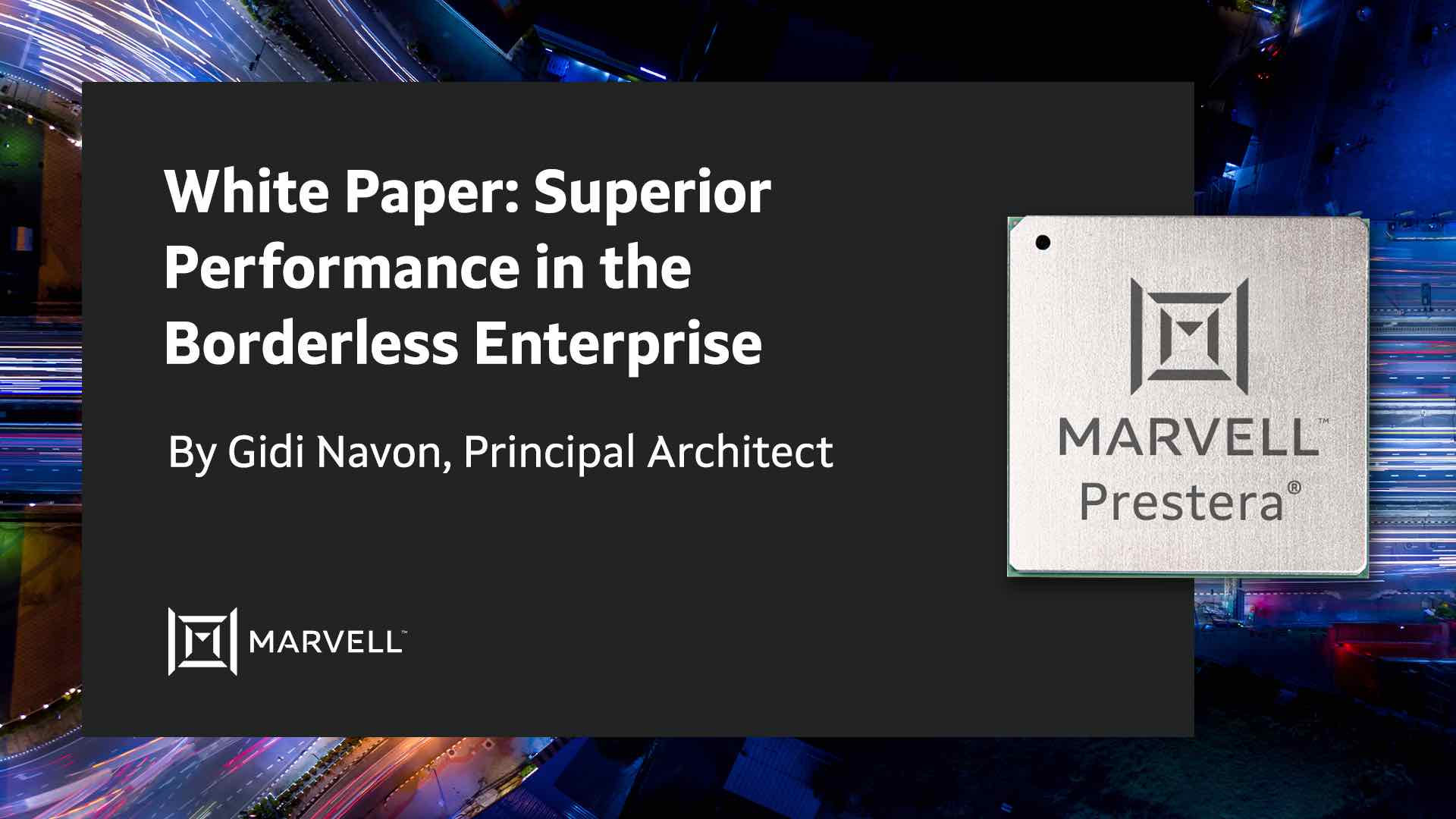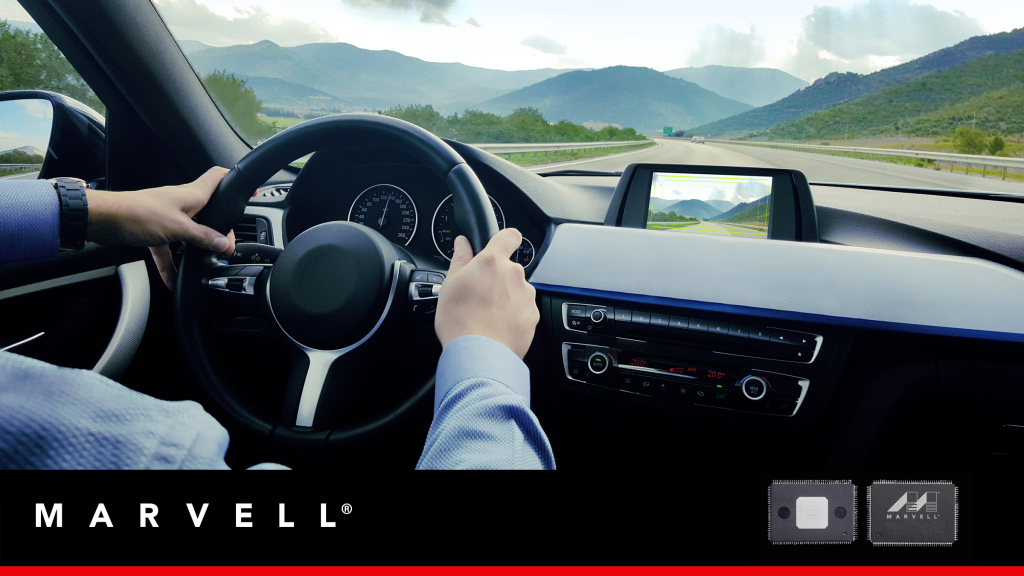

By Amir Bar-Niv, VP of Marketing, Automotive Business Unit, Marvell and John Bergen, Sr. Product Marketing Manager, Automotive Business Unit, Marvell
In the early decades of American railroad construction, competing companies laid their tracks at different widths. Such inconsistent standards drove inefficiencies, preventing the easy exchange of rolling stock from one railroad to the next, and impeding the infrastructure from coalescing into a unified national network. Only in the 1860s, when a national standard emerged – 4 feet, 8-1/2 inches – did railroads begin delivering their true, networked potential.
Some one hundred-and-sixty years later, as Marvell and its competitors race to reinvent the world’s transportation networks, universal design standards are more important than ever. Recently, Marvell’s 88Q5050 Ethernet Device Bridge became the first of its type in the automotive industry to receive Avnu certification, meeting exacting new technical standards that facilitate the exchange of information between diverse in-car networks, which enable today’s data-dependent vehicles to operate smoothly, safely and reliably.
By Gidi Navon, Senior Principal Architect, Marvell

The current environment and an expected “new normal” are driving the transition to a borderless enterprise that must support increasing performance requirements and evolving business models. The infrastructure is seeing growth in the number of endpoints (including IoT) and escalating demand for data such as high-definition content. Ultimately, wired and wireless networks are being stretched as data-intensive applications and cloud migrations continue to rise.
By By Christopher Mash, Senior Director of Automotive Applications & Architecture, Marvell
The in-vehicle networks currently used in automobiles are based on a combination of several different data networking protocols, some of which have been in place for decades. There is the controller area network (CAN), which takes care of the powertrain and related functions; the local interconnect network (LIN), which is predominantly used for passenger/driver comfort purposes that are not time sensitive (such as climate control, ambient lighting, seat adjustment, etc.); the media oriented system transport (MOST), developed for infotainment; and FlexRay™ for anti-lock braking (ABS), electronic power steering (EPS) and vehicle stability functions.
As a result of using different protocols, gateways are needed to transfer data within the infrastructure. The resulting complexity is costly for car manufacturers. It also affects vehicle fuel economy, since the wire harnessing needed for each respective network adds extra weight to the vehicle. The wire harness represents the third heaviest element of the vehicle (after the engine and chassis) and the third most expensive, too. Furthermore, these gateways have latency issues, something that will impact safety-critical applications where rapid response is required.
The number of electronic control units (ECUs) incorporated into cars is continuously increasing, with luxury models now often having 150 or more ECUs, and even standard models are now approaching 80-90 ECUs. At the same time, data intensive applications are emerging to support advanced driver assistance system (ADAS) implementation, as we move toward greater levels of vehicle autonomy. All this is causing a significant ramp in data rates and overall bandwidth, with the increasing deployment of HD cameras and LiDAR technology on the horizon.
As a consequence, the entire approach in which in-vehicle networking is deployed needs to fundamentally change, first in terms of the topology used and, second, with regard to the underlying technology on which it relies.
Currently, the networking infrastructure found inside a car is a domain-based architecture. There are different domains for each key function - one for body control, one for infotainment, one for telematics, one for powertrain, and so on. Often these domains employ a mix of different network protocols (e.g., with CAN, LIN and others being involved).
As network complexity increases, it is now becoming clear to automotive engineers that this domain-based approach is becoming less and less efficient. Consequently, in the coming years, there will need to be a migration away from the current domain-based architecture to a zonal one.
A zonal arrangement means data from different traditional domains is connected to the same ECU, based on the location (zone) of that ECU in the vehicle. This arrangement will greatly reduce the wire harnessing required, thereby lowering weight and cost - which in turn will translate into better fuel efficiency. Ethernet technology will be pivotal in moving to zonal-based, in-vehicle networks.
In addition to the high data rates that Ethernet technology can support, Ethernet adheres to the universally-recognized OSI communication model. Ethernet is a stable, long-established and well-understood technology that has already seen widespread deployment in the data communication and industrial automation sectors. Unlike other in-vehicle networking protocols, Ethernet has a well-defined development roadmap that is targeting additional speed grades, whereas protocols – like CAN, LIN and others – are already reaching a stage where applications are starting to exceed their capabilities, with no clear upgrade path to alleviate the problem.
Future expectations are that Ethernet will form the foundation upon which all data transfer around the car will occur, providing a common protocol stack that reduces the need for gateways between different protocols (along with the hardware costs and the accompanying software overhead). The result will be a single homogeneous network throughout the vehicle in which all the protocols and data formats are consistent. It will mean that the in-vehicle network will be scalable, allowing functions that require higher speeds (10G for example) and ultra-low latency to be attended to, while also addressing the needs of lower speed functions. Ethernet PHYs will be selected according to the particular application and bandwidth demands - whether it is a 1Gbps device for transporting imaging sensing data, or one for 10Mbps operation, as required for the new class of low data rate sensors that will be used in autonomous driving.
Each Ethernet switch in a zonal architecture will be able to carry data for all the different domain activities. All the different data domains would be connected to local switches and the Ethernet backbone would then aggregate the data, resulting in a more effective use of the available resources and allowing different speeds to be supported, as required, while using the same core protocols. This homogenous network will provide ‘any data, anywhere’ in the car, supporting new applications through combining data from different domains available through the network.
Marvell is leading the way when it comes to the progression of Ethernet-based, in-vehicle networking and zonal architectures by launching, back in the summer of 2017, the AEC-Q100-compliant 88Q5050 secure Gigabit Ethernet switch for use in automobiles. This device not only deals with OSI Layers 1-2 (the physical layer and data layer) functions associated with standard Ethernet implementations, it also has functions located at OSI Layers 3,4 and beyond (the network layer, transport layer and higher), such as deep packet inspection (DPI). This, in combination with Trusted Boot functionality, provides automotive network architects with key features vital in ensuring network security. 